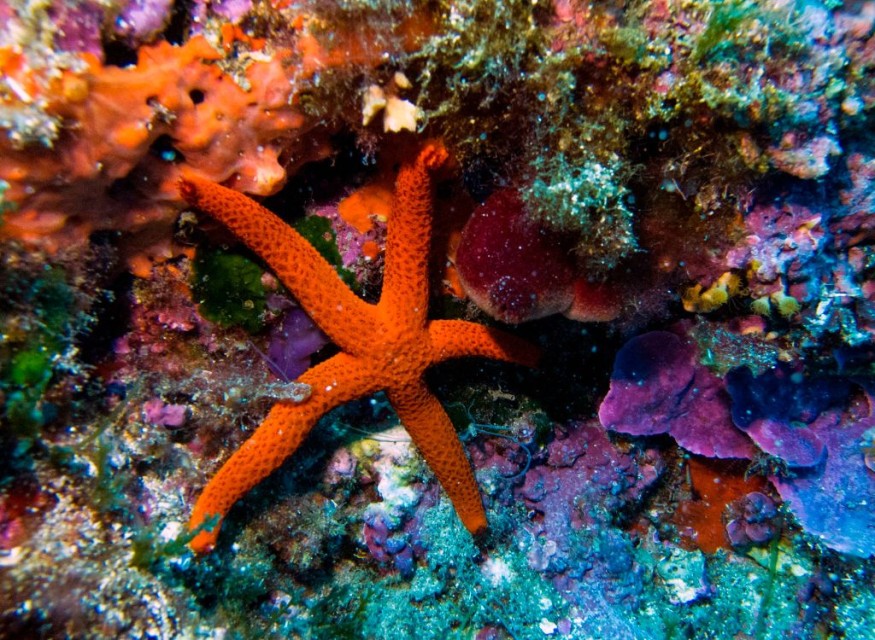
According to genetic sequencing, the starfish evolved without a torso and now consists only of heads that crawl on the seafloor.
Starfish: Heads on the Seafloor
Scientists have long puzzled over whether sea stars have heads or defined front and back ends. Recent genetic research has shed light on this mystery. Sea stars are essentially all heads with no torsos or tails, a stark departure from prior assumptions. Their five identical arms conceal "tube feet" that aid in seafloor mobility. This radical revelation, enabled by advanced genetic sequencing, challenges our understanding of these creatures.
It suggests that sea star ancestors with torso-like features fit better into the evolutionary narrative. This breakthrough may help answer questions about echinoderms, including their shared ancestry with diverse, dissimilar creatures, potentially even humans.
Zoological Mystery Solved
Sea stars, part of the echinoderm group, alongside sea urchins, sand dollars, and sea cucumbers, boast unique body plans with five equal sections, distinct from the bilateral symmetry of most animals. They begin as fertilized eggs, hatching into planktonic larvae that drift in the ocean for weeks before settling on the seafloor. The transformation from a bilateral to a pentaradial body has baffled scientists for centuries.
Senior coauthor Christopher Lowe, a marine biologist at Stanford University, explores this metamorphosis and its connection to the human body plan.
Bilateral symmetry, common in vertebrates and invertebrates, arises from molecular-level genetic processes, underpinning similarities in genetic programming. Echinoderms, however, share a common ancestor with bilateral animals, adding complexity to the puzzle.
Coauthor Dr. Jeff Thompson, a lecturer at the University of Southampton, highlights the enigma surrounding how echinoderm body parts relate to those in other animal groups, as their morphology lacks clear parallels to bilateral animals. This mystery has persisted in scientific exploration, challenging our understanding of evolutionary biology.
Genetic Sequencing Revelation
Researchers employed micro-computed tomography scanning to achieve a groundbreaking three-dimensional view of sea star morphology. Advanced analytical techniques pinpointed gene expression locations and specific RNA sequences within cells, with molecular markers directing cell placement. They uncovered a shared genetic axis in animals, responsible for defining head-to-tail regions across species, transcending anatomical differences.
This molecular blueprint challenged conventional understanding and its role in sea star pentaradial body plans.
The research generated a 3D map tracking gene expression during sea star development, highlighting the genes controlling ectoderm formation, including skin and nervous systems. While head development genes were widespread, torso and tail genes were notably absent, revealing a significant divergence from established knowledge about head and trunk connections in sea stars.
Funded by the Chan Zuckerberg BioHub, established by Dr. Priscilla Chan and Mark Zuckerberg in 2021, as well as NASA, the National Science Foundation, and the Leverhulme Trust, the study explored gene expression in sea stars. Comparing gene expression in sea stars to other animal groups, it became evident that a crucial part of the body plan was missing.
Also Read : 25 Critically Endangered Sunflower Sea Stars Found on Oregon Coasts, Officials Hopeful for Species Recovery
Genes related to trunk patterning weren't expressed in the ectoderm, suggesting that echinoderms' body plan closely resembles the head in other animals. This research indicates that echinoderms' body plan evolved more intricately than previously believed, offering fresh insights into these fascinating creatures. It has transformed how researchers like Thompson perceive this animal group, which they've studied for a decade.
Exploring Unusual Animals and Their Unusual Ways
Research often focuses on species similar to humans, but studying creatures like echinoderms can unlock complex evolutionary mysteries. These modest, often overlooked animals, like sea stars, may offer insights into the origins of life and the diverse ways species maintain their health. Working with less-studied organisms presents challenges, yet it broadens biology's perspective and holds promise for addressing ecological and biomedical questions, according to study coauthor Daniel Rokhsar.
Read also: Crown-of-Thorns Starfish: Predators Survive Heat Waves That Kill Corals by Eating Survivors
© 2025 NatureWorldNews.com All rights reserved. Do not reproduce without permission.





